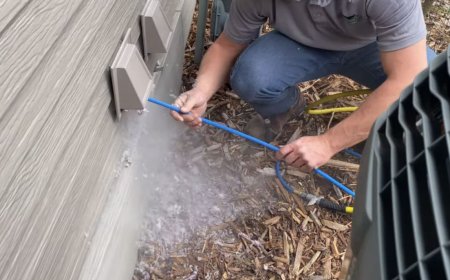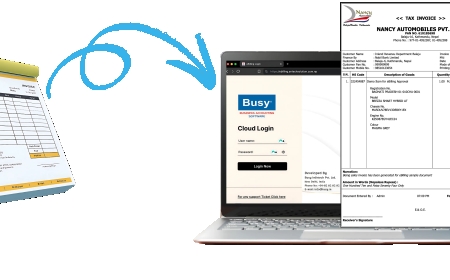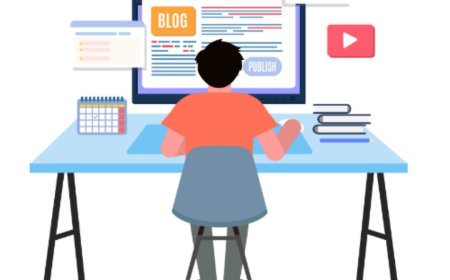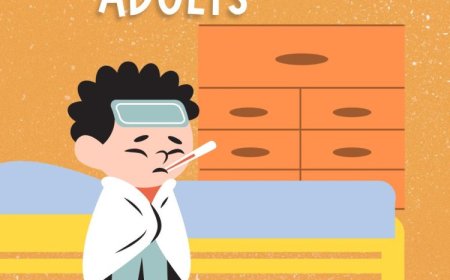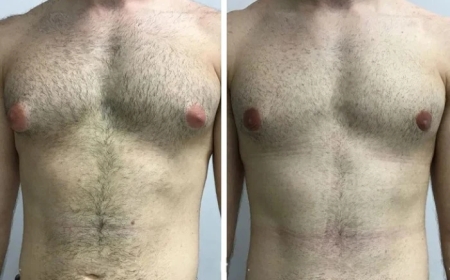Bilateral Ear Infection | Easy Guide to Signs, Causes & Relief
Feeling pain in both ears? What a bilateral ear infection is, how it happens, and the fastest ways to treat it. Simple answers, clear signs, and quick relief tips for adults.

Do both your ears feel blocked or painful at the same time? Wondering why you're having trouble hearing or feeling pressure in both ears? You might be dealing with a bilateral ear infection. As the saying goes , "Your health is your wealth" and your ears matter too. Lets explore the signs , causes , and fast treatments for this double-ear issue. Ready to find the exact problem and the right solution? Lets dive in.
Do your ears feel full , sore , or blocked on both sides? Are you struggling to hear clearly or feeling pressure in both ears at the same time? If yes , you may be dealing with a Bilateral Ear Infection. This condition can be uncomfortable and confusing , especially if youre not sure whats causing it or how to fix it. Dont worry youre not alone , and this guide will help you understand everything in a very simple way.
Lets go step by step and look into what this issue means , why it happens , and most importantly , how you can treat it quickly and safely.
What Is a Bilateral Ear Infection?
A Bilateral Ear Infection means that both ears are infected at the same time. This usually happens when germs (like bacteria or viruses) get into the middle ear , which is the small space behind your eardrum.
Unlike a regular ear infection that affects just one side , this type affects both ears together. It can be more painful and harder to ignore because both ears are involved.
Children get ear infections more often , but adults can also suffer , especially when their immune system is low or they have a cold or allergy. In some cases , a double ear infection in adults may be more serious and needs quick attention.
Signs You Shouldnt Ignore
When both ears are infected , you may notice these signs:
-
Pain or pressure in both ears
-
Trouble hearing
-
Feeling of fullness or blockage
-
Fluid coming out from the ears
-
Fever or tiredness
-
Irritability (especially in children)
-
Trouble sleeping due to discomfort
If you or your child shows these symptoms , its a clear sign that somethings not right. You dont need to panic , but you must act fast to avoid more problems.
Why Does This Happen?
This type of infection doesnt just appear out of nowhere. There are a few main reasons it may occur:
1. Cold or Sinus Infection
When you catch a cold , the infection can travel from the nose or throat into the ears. This blocks the Eustachian tubes , causing fluid to build up and bacteria to grow.
2. Allergies
People with allergies often get stuffy noses and fluid buildup. This can affect both ears and lead to infection.
3. Smoking or Secondhand Smoke
Smoke damages the lining of the ears and throat , making it easier for germs to cause infection in both ears.
4. Weak Immune System
If your body cant fight off germs well , even a simple cold can turn into a Bilateral Ear Infection.
How Is It Diagnosed?
You might think , "How do doctors know if both ears are infected?" Its simple. A doctor will use a small tool called an otoscope to look inside your ears. This tool has a light , and it helps them see if theres fluid , redness , or swelling.
They may also ask about your recent health like if you had a cold , allergies , or ear pain. Sometimes , a hearing test is done to check how well you can hear sounds.
How Can You Treat It Fast?
Now the most important part how to make it go away quickly and safely. You have options depending on what caused it and how bad it is.
1. Antibiotics (for Bacterial Infections)
If bacteria are the reason , your doctor may give antibiotics. You must take the full dose , even if you feel better before its done.
2. Pain Relief
To feel better , you can take over-the-counter pain medicine like acetaminophen or ibuprofen. These help reduce pain and fever.
3. Warm Compress
Placing a warm cloth on the ear can reduce pressure and soothe the area.
4. Rest and Fluids
Your body heals faster when you rest. Drinking water and fluids also helps thin out the mucus and clear the infection.
5. Ear Drops
Some ear drops are made to relieve pain or clean the ear. But never use anything unless your doctor says its safe , especially if fluid is leaking out.
Can It Be Prevented?
Yes , you can take small steps to avoid future infections. Prevention is always better than treatment. Heres what you should do:
-
Wash your hands often to stop the spread of germs
-
Avoid smoking and secondhand smoke
-
Keep allergies under control
-
Get your flu shot and other vaccines
-
Dont put cotton swabs deep in the ear
-
Treat colds or sinus problems early
Doing these things can protect both your ears and your overall health.
What Happens If You Ignore It?
Ignoring a Bilateral Ear Infection may lead to bigger problems. These include:
-
Long-term hearing loss
-
A hole (perforation) in the eardrum
-
Repeated infections
-
Balance issues
Thats why you should always pay attention to your body. If pain lasts more than a few days or gets worse , visit a doctor right away.
How Long Does It Last?
For most people , this infection lasts about 7 to 10 days with the right treatment. If you take medicine , rest , and care for your ears , recovery can be smooth.
But in some cases , especially if you dont treat it or it keeps coming back , it may take longer. So dont wait too long to act.
Are There Natural Remedies?
Some people prefer natural ways to feel better. These can help ease the discomfort , but they are not a replacement for real medicine when needed:
-
Steam inhalation: Clears blocked tubes
-
Hydration: Keeps mucus thin
-
Garlic oil (in small , doctor-approved amounts): May fight germs
-
Elevate head while sleeping: Reduces pressure
Always talk to a healthcare provider before using home remedies , especially in children.
When to See a Doctor?
If you notice these , its time to get help:
-
Severe pain in both ears
-
Yellow or bloody fluid from ears
-
High fever
-
Symptoms lasting over 3 days
-
Dizziness or trouble balancing
Doctors know the right steps to help you heal faster and prevent complications.
Frequently Asked Questions
Q: Can both ears get infected at the same time?
A: Yes , both ears can hurt or feel blocked together. This is called a double ear infection. It can happen from a cold , allergies , or even smoke. You may feel pressure or pain on both sides.
Q: How do I know if I have ear infection in both ears?
A: You might feel pain , hear less , or feel full in both ears. Sometimes theres fluid or fever too. If both ears feel strange , its best to see a doctor.
Q: Do adults get this kind of ear problem too?
A: Yes , adults can get it , especially when sick or tired. A double ear infection in adults can feel worse and needs fast care.
Q: What helps ear pain go away fast?
A: Rest , warm cloths , water , and medicine from a doctor help a lot. Dont wait too long if it gets worse.
Conclusion : The Final Key
A Bilateral Ear Infection might sound scary , especially when both ears hurt or feel blocked. But now you know it can be managed easily with the right care. Whether youre an adult or caring for a child , understanding the signs and acting early makes a big difference.
From spotting the symptoms to learning the fastest treatments , you now have the full picture. Just remember: Your ears are small , but they matter a lot. Treat them with care , and theyll thank you with clear sound and no pain.






